 This week, I had an experience that brought to mind the importance of letting our kids know, daily, that we see them and that they matter. It brought back many memories of families I have worked with, parents I have mentored, and the huge impact I’ve seen when moms and dads learn to ‘see’ their kids during the mundane moments of every day.
This week, I had an experience that brought to mind the importance of letting our kids know, daily, that we see them and that they matter. It brought back many memories of families I have worked with, parents I have mentored, and the huge impact I’ve seen when moms and dads learn to ‘see’ their kids during the mundane moments of every day.
A universal human need is to matter, especially to those we love. We can all satisfy this need for others, especially in our families, in simple ways. When our children or others we cross paths with feel seen, it builds confidence and strengthens a sense of self-worth. It brings moments of joy. But what does it mean to see someone? I experienced this kind of ‘seeing’ this week.
MY EXPERIENCE
Don takes radiation treatments, and so for almost six weeks, we will be at the hospital every weekday morning. When we arrive, we pull into the valet parking lane, I get Don’s walker out, help my mom, and then we make our way into the hospital while someone parks our car. When we’re finished, we get our keys, and a sweet valet volunteer takes them and heads out to retrieve our car.
The night before this experience, we had our first frost. The next morning, leaves were falling like rain from all the trees. When we returned for our car, the valet lane was filled with leaves, and a young man was blowing them out of the road onto the lawn. However, there were so many cars that he had to keep stopping and waiting. They parked our car in the lane that is usually reserved for those who are loaded and ready to leave. Again, he had to stop. He didn’t seem frustrated, which amazed me. When we got to our car, I turned towards him, smiled, and said, “I’m sorry you have to wait for us.” He returned my smile and responded with, “That’s Ok. Not a problem.” Then I busied myself getting Mom and the walker into the car. As I prepared to enter our vehicle, I heard this young man holler, “You have a good day!” What? I turned, smiled, and told him to do the same. He had kept us in his sight for a few extra minutes so he could wish us well as we drove off. I can tell you, I felt seen.
This experience touched me so much that I did a U-turn and went back. I parked and walked to where he was. I told him that I appreciated his taking notice. I told him I was a writer and wanted to share this experience with my readers because when we ‘see’ each other, it matters. He was willing to let me take a picture of us. He was all smiles and told me I was special. I could tell from his face that he felt special, too.
Can you see the simplicity of this moment and its value? This is what can and needs to happen in families multiple times a day.
How can that be done?
It requires that we take time as we move through our day to ‘see’ our children. If possible, say goodbye at the door when they leave. Smile and say, “Glad you’re home,” when they return. Touch an arm and smile as you pass in the hall. No words needed. Pat the back of a child doing the dishes or folding laundry, then go on your way. Give a word of encouragement and a smile to someone doing their homework. Look in a bedroom door of someone cleaning their room and smile encouragement or say, “You’re doing a good job.” If your child is sitting on the couch watching TV, sit by them, pat a knee, and smile. Then get up and go. Rub a back while sitting at church or while waiting at an appointment. The list goes on. This works even with teens.
IT’S A PRACTICE
Each of these interactions takes less than a minute and can be done all day long if we understand their value. It isn’t just about being nice. It isn’t about being a parent. It’s about letting another person know that they’re seen and that they matter.
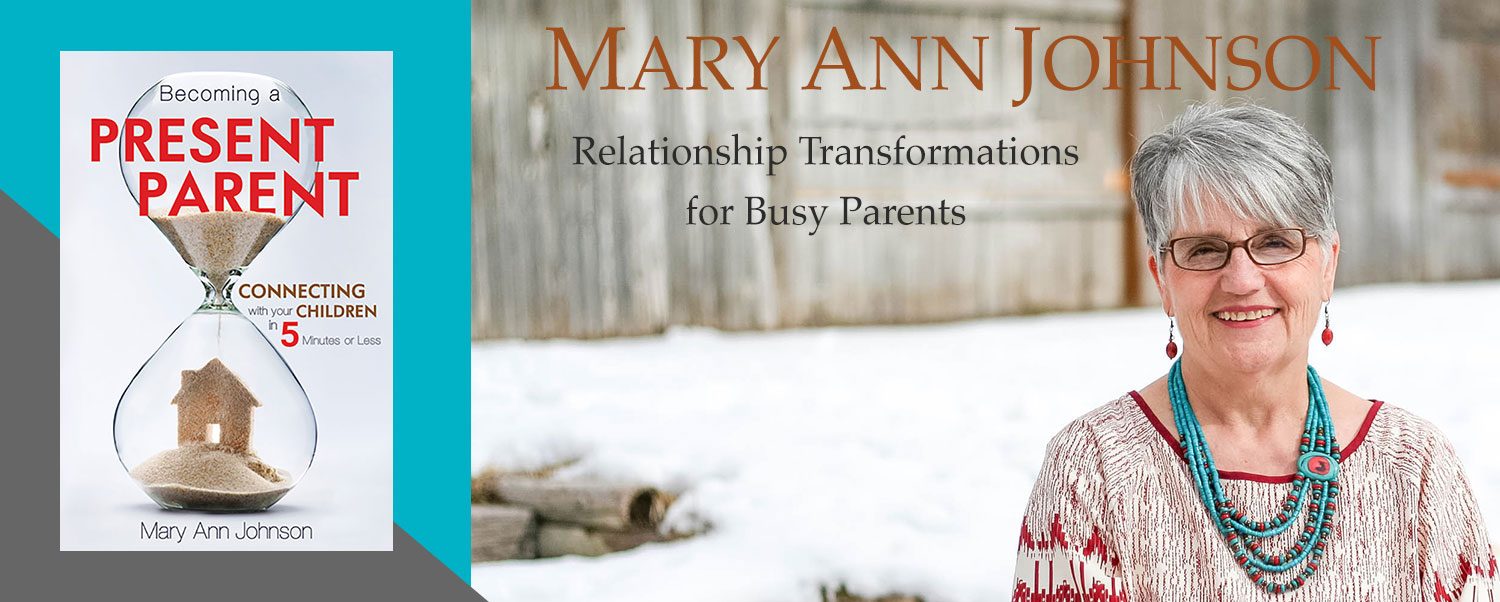


 Years ago, I spent a great deal of time with my grands that live in Utah. We lived one block away. This was before we consolidated our two families into a three-generation home. My daughter, Jodie, was homeschooling. At that time, I was teaching and mentoring mothers who homeschooled. Then I made a transition. I realized that many of the excellent things I was teaching applied to a whole spectrum of parenting, not just those who homeschooled.
Years ago, I spent a great deal of time with my grands that live in Utah. We lived one block away. This was before we consolidated our two families into a three-generation home. My daughter, Jodie, was homeschooling. At that time, I was teaching and mentoring mothers who homeschooled. Then I made a transition. I realized that many of the excellent things I was teaching applied to a whole spectrum of parenting, not just those who homeschooled.
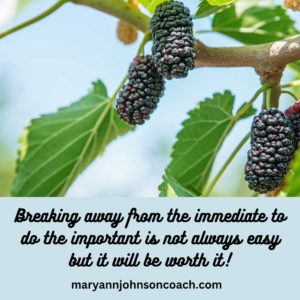
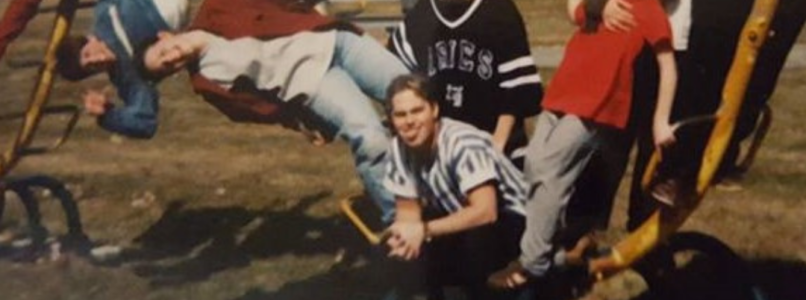
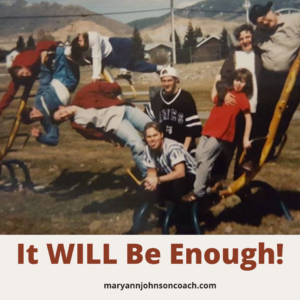 I received a gift on my Birthday
I received a gift on my Birthday 
 A father was painting the outside of his home. His five-year-old son wanted to help. So this good father gave his son an old shirt with the sleeves rolled up several times. They both went to work on the door, dad painting the top and son painting the bottom. It just happened to be the main entrance.
A father was painting the outside of his home. His five-year-old son wanted to help. So this good father gave his son an old shirt with the sleeves rolled up several times. They both went to work on the door, dad painting the top and son painting the bottom. It just happened to be the main entrance. workshop in which he made wonderful things. The son said, “I would wander into this workshop and watch him. Just to be in his presence was a thrill for me. He invited me to help him by passing a hammer, a screwdriver, or some other tool. I was convinced that my help was necessary and that without me he would not be able to complete his task.
workshop in which he made wonderful things. The son said, “I would wander into this workshop and watch him. Just to be in his presence was a thrill for me. He invited me to help him by passing a hammer, a screwdriver, or some other tool. I was convinced that my help was necessary and that without me he would not be able to complete his task.
 It’s helpful to know and understand that moments of connection can happen during the daily activities we engage in already. It needn’t be out of the ordinary, planned ahead or take extra time.
It’s helpful to know and understand that moments of connection can happen during the daily activities we engage in already. It needn’t be out of the ordinary, planned ahead or take extra time. connect with his children consistently but hadn’t known how.
connect with his children consistently but hadn’t known how. 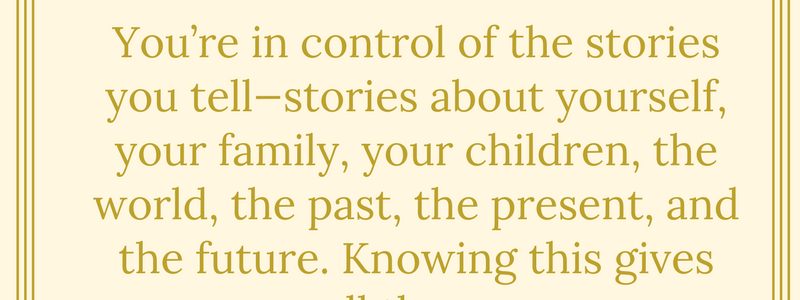
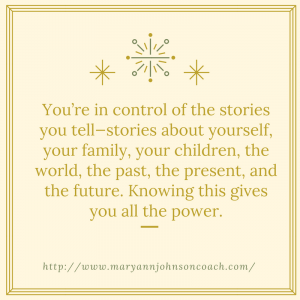 I keep thinking that I’ll switch topics from the power of controlling our story and response to another parenting topic but every day provides a new and powerful example of just what it looks like to control how we think and act.
I keep thinking that I’ll switch topics from the power of controlling our story and response to another parenting topic but every day provides a new and powerful example of just what it looks like to control how we think and act.
 I went to Seattle to visit my youngest daughter’s family and to participate in her husband’s graduation. When we walked in the house from the airport at 11:30 that night we had to step over toys, shoes, the day’s clothes, etc. My daughter looked at me and said, “Mom I cleaned this house twice for you.” I smiled. I know that feeling. I also know that she has two small, busy children and that she spends time with them.
I went to Seattle to visit my youngest daughter’s family and to participate in her husband’s graduation. When we walked in the house from the airport at 11:30 that night we had to step over toys, shoes, the day’s clothes, etc. My daughter looked at me and said, “Mom I cleaned this house twice for you.” I smiled. I know that feeling. I also know that she has two small, busy children and that she spends time with them. is repeated. She always asks me why I pick some major thing to clean every time I come. Well, it’s because I know what a challenge it is to stay on top of the daily things, let alone get any deep cleaning done, especially when you are willing to put it aside to help a five-year-old ride her bike or create a superhero costume for a nine-year-old son.
is repeated. She always asks me why I pick some major thing to clean every time I come. Well, it’s because I know what a challenge it is to stay on top of the daily things, let alone get any deep cleaning done, especially when you are willing to put it aside to help a five-year-old ride her bike or create a superhero costume for a nine-year-old son. I live with my oldest daughter and her family, in an attached apartment. So I see what goes on there even more intimately. It is almost always slightly chaotic. The floor is rarely uncluttered for more than a few hours at a time. But I see her stop what she is doing to help any one of her four children with whatever project or need they may have. In fact, I have thought to myself, “Man, I would have told them I would help them later.” You see, I still have to work on being Present!
I live with my oldest daughter and her family, in an attached apartment. So I see what goes on there even more intimately. It is almost always slightly chaotic. The floor is rarely uncluttered for more than a few hours at a time. But I see her stop what she is doing to help any one of her four children with whatever project or need they may have. In fact, I have thought to myself, “Man, I would have told them I would help them later.” You see, I still have to work on being Present!
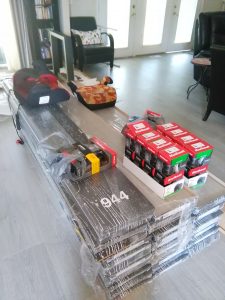
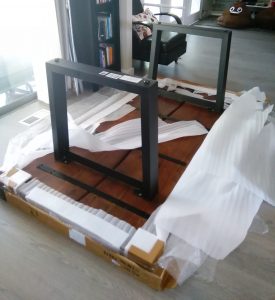

 I had a friend ask me a very interesting question the other day. “Did you write your book because you had troubles in your own family?” That was a fair question but the answer was NO. That isn’t why I wrote it.
I had a friend ask me a very interesting question the other day. “Did you write your book because you had troubles in your own family?” That was a fair question but the answer was NO. That isn’t why I wrote it.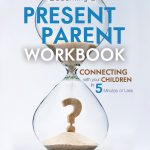
 I received so many emails from people who had attended classes, workshops, webinars, and presentations saying that this information was life changing for them. I knew there had to be a way to broaden the audience and touch more families. That is how
I received so many emails from people who had attended classes, workshops, webinars, and presentations saying that this information was life changing for them. I knew there had to be a way to broaden the audience and touch more families. That is how  “Being a single woman, without children, I wasn’t sure what value this book would have for me. It impacted me greatly! I have set a goal to re-read it every few years. It’s not just a book about being a Present parent. It’s a book about being a Present person. Jenny Johnson, M.A., CCC-SLP
“Being a single woman, without children, I wasn’t sure what value this book would have for me. It impacted me greatly! I have set a goal to re-read it every few years. It’s not just a book about being a Present parent. It’s a book about being a Present person. Jenny Johnson, M.A., CCC-SLP just with children, but with all relationships. I have enjoyed it profoundly… Jason Hewlett, Dad and Speaker
just with children, but with all relationships. I have enjoyed it profoundly… Jason Hewlett, Dad and Speaker  I’m not much of a reader. Unless a book catches my attention within the first few pages, I seldom read it all the way through. This book not only drew me in from the beginning but I finally had to make myself stop reading and go to bed. “Becoming a Present Parent” will be one of those life-changing books for parents and for anyone who wants to have an amazing relationship with child. Well worth the read. Cindy Winward, Mother of four grown children and mentor at Midwives College of Utah
I’m not much of a reader. Unless a book catches my attention within the first few pages, I seldom read it all the way through. This book not only drew me in from the beginning but I finally had to make myself stop reading and go to bed. “Becoming a Present Parent” will be one of those life-changing books for parents and for anyone who wants to have an amazing relationship with child. Well worth the read. Cindy Winward, Mother of four grown children and mentor at Midwives College of Utah insight and real-life steps in helping you stay “checked in” with your children, a difficult thing in this distracting world. I love how Mary Ann teaches us how to truly connect with our children. Ann Webb, Humanitarian, Author and Founder of Ideal LifeVision
insight and real-life steps in helping you stay “checked in” with your children, a difficult thing in this distracting world. I love how Mary Ann teaches us how to truly connect with our children. Ann Webb, Humanitarian, Author and Founder of Ideal LifeVision You may read Becoming a Present Parent all the way through one time. But then you’ll come back to it time and again to refresh on certain topics at the very time you need them. My guess is your copy will become dog-eared and marked up, and will become like a comfortable friend. Norma Jean Lutz, Author, Speaker, Editor, Novel Critique Consultant, Ghostwriter
You may read Becoming a Present Parent all the way through one time. But then you’ll come back to it time and again to refresh on certain topics at the very time you need them. My guess is your copy will become dog-eared and marked up, and will become like a comfortable friend. Norma Jean Lutz, Author, Speaker, Editor, Novel Critique Consultant, Ghostwriter